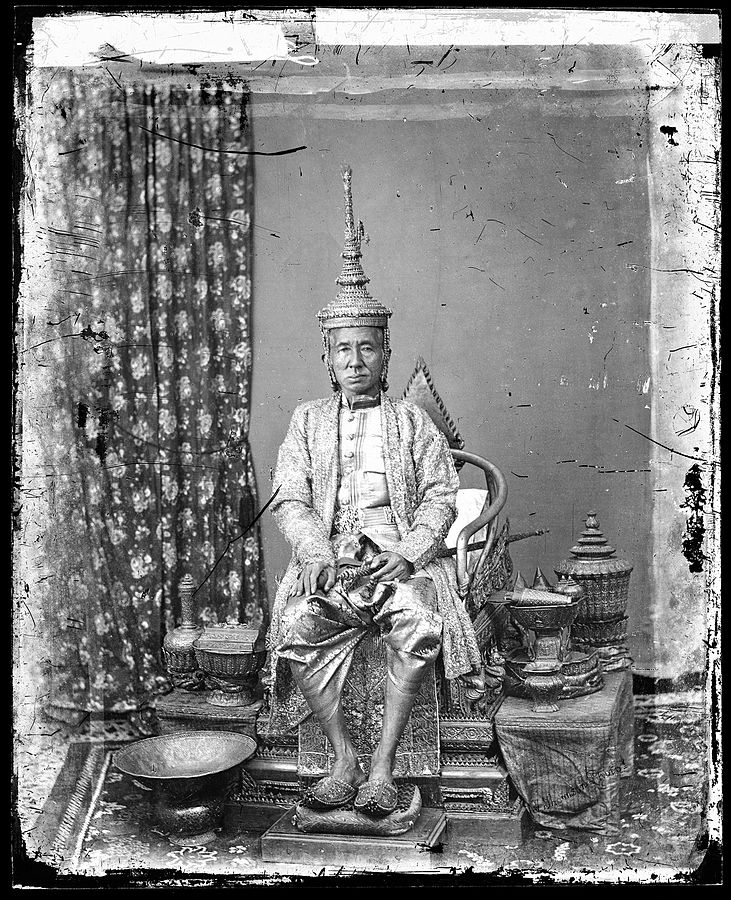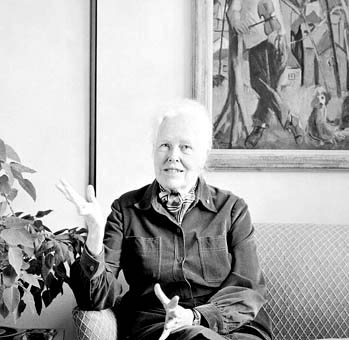Anna Harriette Edwards Leonowens (born 6 November 1831 in Ahmadnagar, India; died 19 January 1915 in Montreal, Quebec). Anna Leonowens was an educator, author and lecturer who became famous as the British governess to the wives and children of King Mongkut (Rama IV) of Siam (now Thailand) in the 1860s. After leaving Siam, she emigrated to Canada, where she advocated for women’s suffrage, taught at McGill University and helped found what is now the Nova Scotia College of Art and Design. She was the inspiration for Margaret Landon’s historical novel, Anna and the King of Siam (1944), and the Rodgers and Hammerstein musical The King and I (1951).

Anna Leonowens was an educator, author and lecturer who became famous as the British governess to the wives and children of King Mongkut (Rama IV) of Siam (now Thailand) in the 1860s.
("File:Anna Leonowens 1862.jpg"byRoderick Eime from Australiais licensed underCC BY 2.0)
Early Life and Family
Anna was the younger daughter of Sergeant Thomas Edwards, a former cabinetmaker from London who enlisted as a soldier with the East India Company, and Mary Anne Glascott, an officer’s daughter of Anglo-Indian descent. Anna’s father died not long after she was born, and her mother remarried another soldier, Corporal Patrick Donahue. Anna and her elder sister, Eliza, were educated at the Bombay Education Society’s school for the mixed-race daughters of deceased or absent military fathers.
In her books, Leonowens hid her social class and her ethnic background. She claimed that her father had been a Captain and that she had been born in Caernarfon, Wales, and educated at a boarding school for young ladies. She ended all contact with her family in India after her marriage and emigration.
Marriage and Children
As with her family, Anna Leonowens misrepresented her marriage, claiming that she married a Major Leonowens of the commissariat in 1851. In fact, she married Private Thomas Leon Owens, an army paymaster’s clerk from County Wexford, Ireland, on 25 December 1849. The couple emigrated from India to Australia via Singapore in 1852. They had four children: Selina (1850–52), Thomas (1853–54), Avis (1854–1902) and Louis (1856–1919). In 1857, the family moved to Singapore, where Thomas worked as a hotel keeper until his death in 1859. As a widow, Leonowens opened a school for the children of British officers in Singapore.
Educator in Siam
In 1862, King Mongkut of Siam wrote to his representative in Singapore with instructions to employ a governess for his wives and children, including his eventual successor, Prince Chulalongkorn. Anna Leonowens accepted the position and sailed to Bangkok with her son Louis (Avis was sent to boarding school in England). King Mongkut, a Buddhist, instructed Leonowens to “do your best endeavour for knowledge of English language, science and literature and not for conversion to Christianity.”
While Leonowens learned multiple Asian languages and admired “what is true and wise in the doctrine of Buddha,” she disapproved of the King’s arbitrary rule, multiple wives and “the sickening hideousness of slavery.” In addition to her teaching duties, Leonowens acted as an informal secretary to the King, whom she concluded was “as fickle and petulant as he was suspicious and cruel” in his relations with his wives but “in many respects, an able and virtuous ruler.” She and Louis departed Siam on a leave of absence in 1867 and emigrated to the United States after King Mongkut’s death in 1868. There, Leonowens worked as a teacher, lecturer, author and journalist.
Leonowens wrote two books about her time in Siam: a memoir entitled The English Governess at the Siamese Court (1870) and a book about the women of the royal household,The Romance of the Harem (1873). The books exaggerated her influence at the Siamese court and included incidents, such as the execution of one of King Mongkut’s concubines, Tuptim, that are not corroborated by other sources. When Leonowens was reunited with her former pupil, King Chulalongkorn (Rama V), during his visit to the United Kingdom in 1897, the King asked, “Why did you write such a wicked book about my father King Mongkut? You know that you have made him utterly ridiculous….” Leonowens defended her portrayal of the King and the royal court.
One of King Chulalongkorn’s sons, King Prajadhipok (Rama VII), was the first reigning foreign monarch to tour Canada. He visited Banff and Ottawa in 1931.
Emigration to Canada
Anna Leonowens moved to Halifax in 1878, after her daughter, Avis, married Thomas Fyshe, the general manager of the Bank of Nova Scotia. She assumed a leading role in Halifax’s social and cultural life. In honour of Queen Victoria’s Golden Jubilee in 1887, Leonowens led the fundraising efforts for a formal institution for the Victoria School of Art and Design, editing articles, giving a lecture series and organizing an art exhibition in support of the school. The Anna Leonowens Gallery in Halifax, established in 1968, honours her role in founding what is now the Nova Scotia College of Art and Design.
Leonowens advocated for women’s suffrage in Canada at all levels of government, from local school boards to parliament. She held leadership positions in women’s organizations, including the Halifax Local Council of Women and the Woman’s Suffrage Association, and met with viceregal consort Lady Aberdeen in 1897. In a speech to the Dominion Enfranchisement Association in 1894, Leonowens stated that, due to the example of Queen Victoria, “women have not only proved their capacity for governing great nations but have shown wonderful capacity for affairs and proved herself to be a true helpmate and coworker, instead of a servant and plaything of man.” While based in Halifax, Leonowens travelled extensively, visiting Russia, Germany and the United Kingdom, and wrote about her experiences.
In 1901, Leonowens moved to Montreal to join her daughter, son-in-law (who had become general manager of the Merchants’ Bank of Canada) and grandchildren. She taught Sanskrit at McGill University. Leonowens became president of the Montreal Foundling and Baby Hospital and helped secure a new building for the institution. She suffered a stroke in 1911, which resulted in blindness, and died in 1915. In her obituary, the Montreal Gazette praised how Leonowens was “untiring in her charitable, religious and philanthropic work.”

King Mongkut of Siam (now Thailand), in state robes, Bangkok. Anna Leonowens was British governess to the king’s wives and children in the 1860s.
(photo by John Thomson, courtesy Wellcome Images, "File:The 1st King of Siam, King Mongkut, in state robes, Bangkok Wellcome L0055542.jpg"is licensed underCC BY 4.0)
Did you know?
In her books, Anna Leonowens included photographs of southeast Asia taken by Scottish photographer John Thomson. In 1866, Thomson became the first to photograph the Angkor Wat temple complex in Cambodia. Thomson had been sponsored by the King of Siam, and it is likely that Leonowens met him at the Siamese court. Her granddaughter, Avis Selina Fyshe, later donated the Anna Leonowens collection of Thomson’s photographs to McGill University.
In Popular Culture
Margaret Landon’s historical novel, Anna and the King of Siam, was published in 1944. It received positive reviews for its portrayal of her as an advocate for women’s rights and abolitionism in Thailand. The novel sold over a million copies and was adapted by Richard Rodgers and Oscar Hammerstein II as a musical, The King and I, in 1951. Anna Leonowens was portrayed by Deborah Kerr in the 1956 musical film The King and I, Irene Dunne in the 1946 dramatic film Anna and the King of Siam and Jodie Foster in the 1999 biographical film Anna and the King.
Her books are available in Thailand in both English and Thai. However, Landon’s novel, as well as the film adaptations, are considered disrespectful to the monarchy because of their negative portrayal of King Mongkut and are banned under the country’s strict lèse-majestélaws.

 Share on Facebook
Share on Facebook Share on X
Share on X Share by Email
Share by Email Share on Google Classroom
Share on Google Classroom


